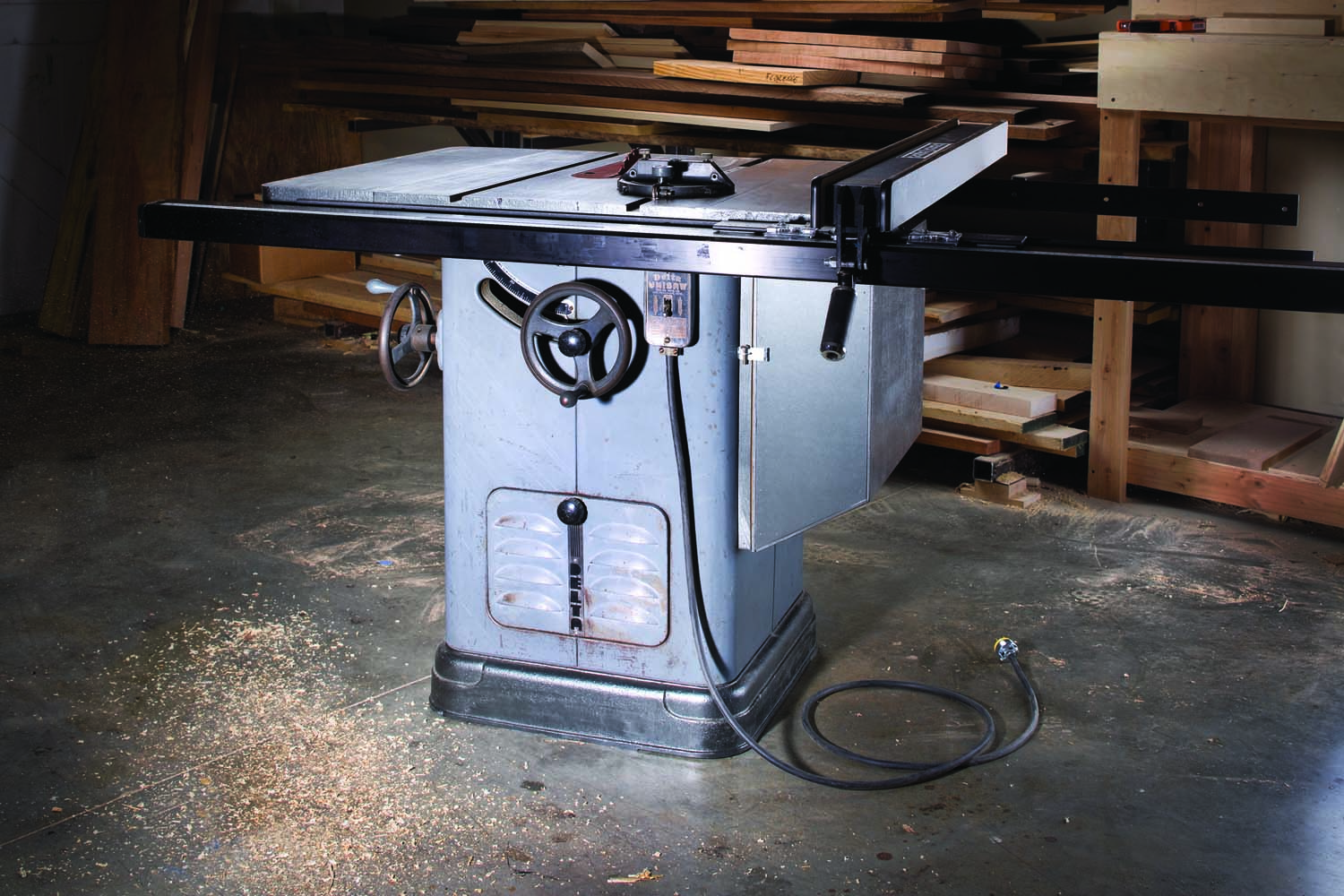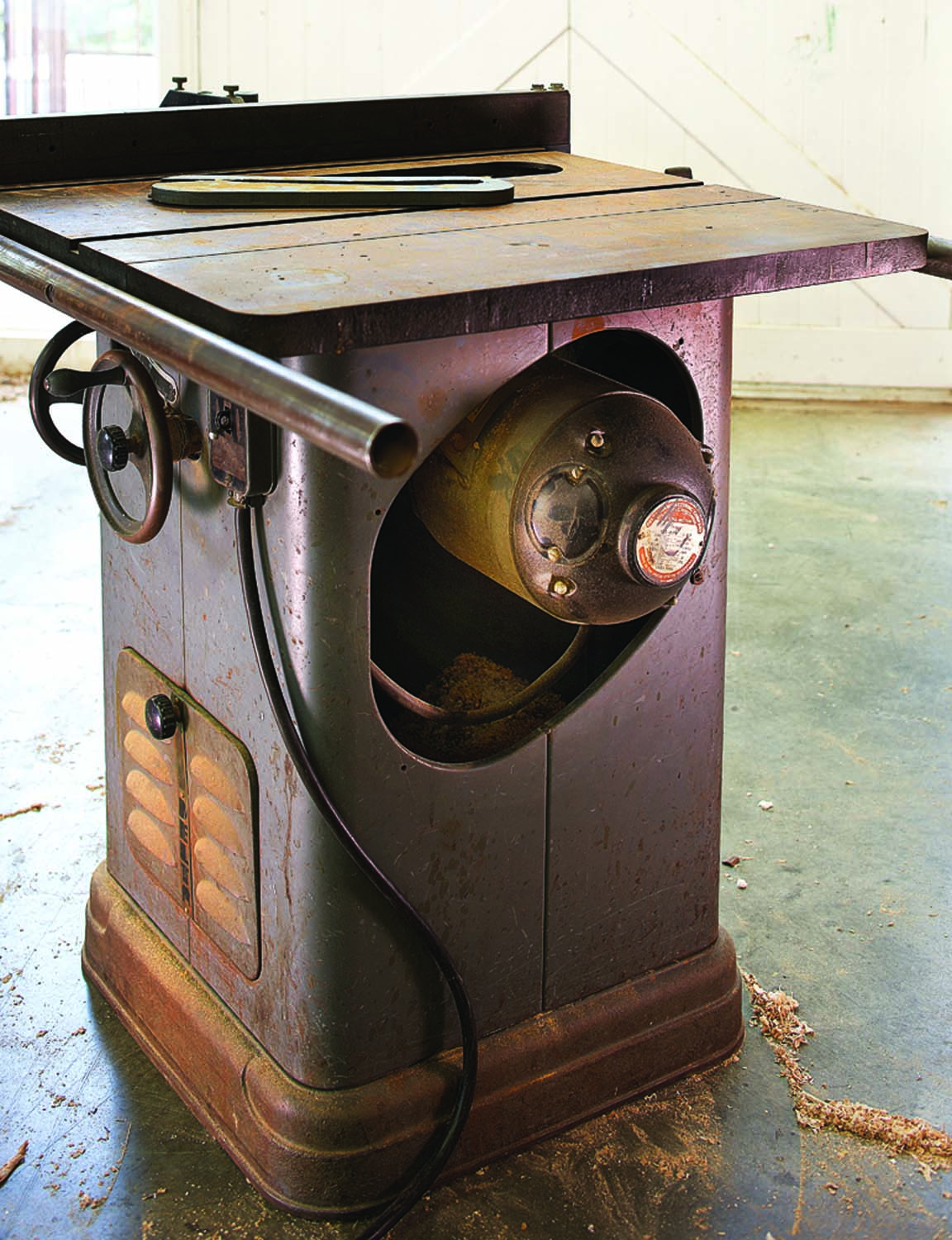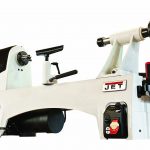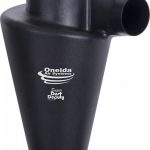We may receive a commission when you use our affiliate links. However, this does not impact our recommendations.

The refurbished 1944 Unisaw is ready for another 50 years of service. The labor of love included new arbor and motor bearings, a thorough cleaning, some paint and rewiring, among other chores. The original fence was upgraded to a modern Biesemeyer model.
This article originally appeared in the June 2010 issue of Popular Woodworking.
The dream of a “barn find” looms large in most people’s imagination, whether it’s 1,000 board feet of 18″-wide walnut or a ’67 Mustang (pony interior, of course). Problem is, it rarely happens to you.
My turn came last fall when I stumbled on an old Delta Unisaw. And I mean WWII-era old. The serial number and a quick Internet search gave me a “born on” date of 1944, about the fourth year of production for this stalwart table saw model.

Meet your Daddy! The WWII-era Unisaw design was relatively unchanged until Delta released its totally redesigned Unisaw in 2008.
But finding this relic and owning it were two separate matters. The contents of the building where I discovered it were to be sold at auction. So just how much should I pay for the saw? Would it be a steal? Would a “collector” bid up the price? The auctioneer asked for $125. No takers. Next he asked for $75 and a hand went up. Then $100 and my hand went up. In a matter of seconds, it was mine for $165.
And thus began my relationship with a 65-year-old woodworking machine. As you would expect, “getting acquainted” was the first order of business after hauling the Unisaw back to the Popular Woodworking Magazine shop.
There were three things that first struck me about my “new” machine: 1) how familiar it looked (there had been very few significant design changes through the decades);
2) the Art-Deco style and logo were very cool looking; and 3) the shape of the motor was far different from any “modern” motor I’d ever seen.

When purchased, it was clear the saw needed work, but how much was unknown.
I’ve owned two table saws during the past 30 years and both were made by Delta (a “contractor” saw purchased in 1980 or so, then a new Unisaw I bought in 2000) and it was clear this 1944 version shared a lot of the same DNA. The old saw’s fence was essentially the same as the Jet Lock rip fence from my contractor saw. The overall look, interior workings, trunnions and more looked like they could easily interchange between Unisaws. In fact, when I decided to upgrade the 1944 Unisaw with a new Biesemeyer fence, I found the hole centers and bolt sizes for attaching the new fence were exactly the same today as they were 65 years ago.
What I did find completely different was the motors. Just about all motors on modern machines are capacitor-start induction motors. The capacitor element of the motor, simply stated, helps give the heavy motor armature an extra jolt of power to get it up to speed, then it cuts out. This old saw uses a repulsion-induction motor. To get this armature up and running, extra power feeds through four carbon brushes and a commutator. When the armature turns fast enough, centrifugal force cuts out the extra juice.
Because of its shape, the monster 86 pounder was called a “bullet” motor. The plate rated it at just 1-horsepower, but in use, I can only say they must have made horses differently back then. Or, to quote an old friend in the woodworking machine industry, “Those old motors had more guts than a butcher’s dog.”
Back at the shop, I was tempted to simply plug it in and flip the switch for a quick “test drive.” However, my instincts suggested a thorough look at the switch and plug wiring. Although the outside sheath was intact, I found the inner wire insulation was dry-rotted and required replacement.
With the motor out and the top off, examining and servicing the trunnions was easy. All the moving parts were easy to clean and worked like new with just a bit of penetrating oil, an abrasive pad and some elbow grease.
The arbor bearings were quite another story. The ancient grease in these old sealed bearings meant replacement. So I disassembled the arbor mechanism, pulled the old bearings and pressed new ones in place – not a particularly difficult or time-consuming task.
I next turned my attention to the saw exterior. My dilemma was how to deal with the dirty and worn original paint. Should I go for a shiny new paint job, or just clean the years of grime off and let the “battle scars” remain? Ultimately, I decided on a combined approach. The cast iron base was somewhat rusted, so I elected to clean and paint it, but I kept the original cabinet paint. I treated it with a cleaning agent, a #400-grit wet sanding and a final coat of wax.
I also cleaned the cast iron top, steel fence and fence guide bars. With that, the machine was ready for reassembly and testing.
It was a wonderful moment when I flipped the switch and the motor whirred to life. I mounted a blade and made several cuts. But after about 20 minutes, I started ripping a piece of 8/4 poplar and the motor came to a heart-sinking stop. Now what?
I found a lot of help at the web sites Old Wood-Working Machines (owwm.com) and its companion message board (owwm.org). I guessed the issue was the commutator and centrifugal device that shorts out the motor. So out came the motor. With some trepidation, I cracked the cases and took it apart. Inside, it was a filthy mess. Inspecting the so-called “necklace,” that part of the starting mechanism mentioned earlier, it appeared that a spring was stretched beyond its ability to properly hold the works together.
To make a long story short, I recompressed the spring and replaced the two motor bearings while I was at it. Next, I gave the entire motor interior a thorough, if gentle, cleaning and put everything back together. It was a satisfying moment to hear the motor power up, stronger and quieter than before. That same 8/4 poplar piece cut easily this time.
To bring this old Unisaw closer to the features of a modern machine, I fabricated a dust-collection arrangement at the back of the saw and made a motor cover. I wanted a modern fence, so I installed a new one from Biesemeyer.
With some luck, my old Unisaw may see another 50 years of service. And if so, I’ll be even more proud of the work I put into the refurbishment. I discovered in doing the work that tasks such as changing bearings and performing rudimentary motor repair were within my abilities – even if undertaking them was a bit scary at the outset.
I’d like to invite you to follow me in my journey bringing this fine old machine back to good working order. You can do that by viewing the six short videos we made of the various stages of work, viewable right here.
Here are some supplies and tools we find essential in our everyday work around the shop. We may receive a commission from sales referred by our links; however, we have carefully selected these products for their usefulness and quality.








